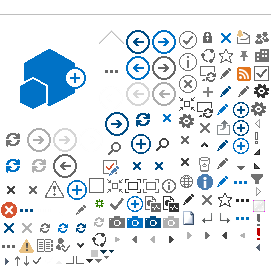Your website is more than a page on the internet—it’s your digital front door and the first impression many prospective clients have of your business.
Your website is more than a page on the internet—it's your digital front door. For independent insurance agencies, it's often the first impression prospective clients have of your business. That's why a well-maintained, high-performing website isn't just nice to have, it's essential.
What makes a website "high-performing?" Beyond good design, technical factors like search engine optimization (SEO), speed and accessibility play a critical role. These determine how easily customers find you, how quickly your pages load and how user-friendly your site is. With the right tools, you can ensure your website works for you, not against you.
By regularly reviewing and improving your site, you can ensure it works as effectively as possible for your business. Here are nine things every agency should review on their website:
1) Page load speed. Slow-loading websites frustrate users and can cause them to leave your site. Search engines like Google also prioritize fast sites in their rankings. To optimize page load speed, you can compress images, minimize code, use caching and choose a reliable hosting provider.
2) User experience (UX). Your website should be intuitive and easy to navigate. A positive UX keeps visitors engaged and encourages them to take action. Ensure that navigation is clear, create a logical page structure and provide consistent design across all pages.
3) Accessibility. Websites should be usable by everyone, including individuals with disabilities. Accessibility improves usability and ensures compliance with Americans with Disabilities Act (ADA) standards. Include alt text for images, use clear fonts and high contrast, and make the site navigable with a keyboard.
4) Content quality. High-quality, relevant content builds trust with visitors and improves your site's authority with search engines. Regularly update and create relevant content that addresses customer pain points. Also, ensure all text is free of grammatical errors.
5) Local SEO. Appearing in local searches is important for attracting local customers. Include your address and phone number, create a Google Business Profile and use locally relevant keywords.
6) Social media integration. Linking your website to your social media accounts encourages engagement and provides another avenue for customer interaction. Add social media icons to your header, footer or contact page and ensure they link to active profiles.
7) Analytics and tracking. Data on how visitors interact with your site can inform decisions about improvements. Free tools like Google Analytics can track metrics, such as most-viewed pages, bounce rate, traffic sources and time spent on pages.
8) Regular updates and maintenance. An outdated website with broken links or missing information harms credibility and usability. Audit your site regularly for errors and refresh content to reflect current business offerings.
9) Contact information. Customers need an easy way to reach you. Missing or hard-to-find contact details can deter potential leads. Include a dedicated contact page with a form, phone number, email address and physical address. Consider adding a live chat option for instant assistance.
Your website is a tool to build trust, generate leads and set you apart from the competition. By regularly reviewing and optimizing these aspects, you can attract and retain customers, improve search visibility and drive business growth.
Kasey Connors is Big "I" vice president of marketing operations at Trusted Choice®.
The new Digital Performance Hub from Trusted Choice makes managing your website's health simple. It provides an easy-to-use dashboard that tracks the most important metrics for search engine rankings and customer experience.
Access your Digital Performance Hub now.
